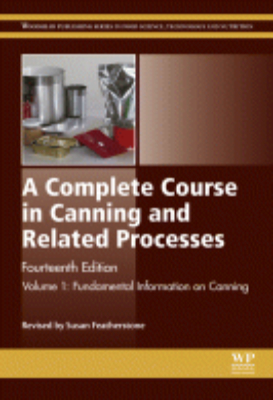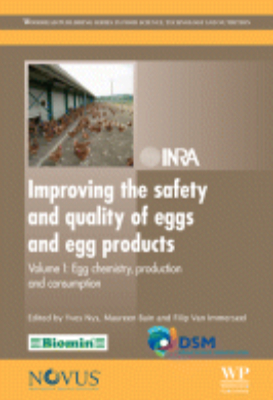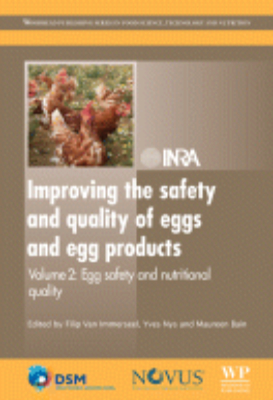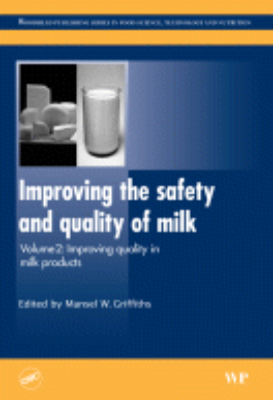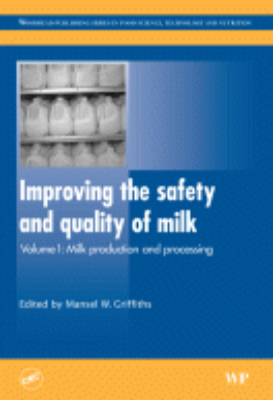E-Resources
A Complete Course in Canning and Related Processes: Volume 1
A Complete Course in Canning and Related Processes, Fourteenth Edition: Fundamental Information on Canning provides readers with a complete course on canning. This latest edition continues the tradition for both professionals in the canning industry and students who have benefitted from this collection for over 100 years. It contains extensively revised and expanded coverage, and the three-title set is designed to cover all phases of the canning process, including planning, processing, storage, and quality control. Major changes for the new edition include new chapters on regulation and labeling that contrast the situation in different regions worldwide, updated information on containers for canned foods, and new information on validation and optimization of canning processes, among other topics.
A Complete Course in Canning and Related Processes: Volume 2
A Complete Course in Canning is firmly established as a unique and essential guide to canning and related processes. Professionals in the canning industry and students have benefited from successive editions of the book for over 100 years. This major new edition continues that reputation, with extensively revised and expanded coverage. The three-title set is designed to cover all planning, processing, storage and quality control phases undertaken by the canning industry in a detailed, yet accessible fashion. Major changes for the new edition include new chapters on regulation and labelling that contrast the situation in different regions worldwide, updated information on containers for canned foods and new information on validation and optimization of canning processes, among many others.
A Complete Course in Canning and Related Processes: Volume 3
A Complete Course in Canning and Related Processes: Volume 3, Processing Procedures for Canned Food Products, Fourteenth Edition provides a complete course in canning and is an essential guide to canning and related processes. Professionals and students in the canning industry have benefited from successive editions of the book for over 100 years. This major new edition continues that reputation, with extensively revised and expanded coverage. The book's three-title set is designed to cover all planning, processing, storage, and quality control phases undertaken by the canning industry in a detailed, yet accessible fashion. Major changes for the new edition include new chapters on regulation and labeling that contrast the situation in different regions worldwide, updated information on containers for canned foods, and new information on validation and optimization of canning processes, among many other topics.
Improving the Safety and Quality of Eggs and Egg Products: 2011 Egg Chemistry, Production and Consumption
Eggs are economical and of high nutritional value, yet can also be a source of foodborne disease. Understanding of the factors influencing egg quality has increased in recent years and new technologies to assure egg safety have been developed. Improving the safety and quality of eggs and egg products reviews recent research in these areas.Volume 1 focuses on egg chemistry, production and consumption. Part one sets the scene with information on egg production and consumption in certain countries. Part two then provides essential information on egg formation and chemistry. Factors that impact egg quality are the focus of part three. Chapters cover the role of poultry breeding, hen nutrition and laying environment, among other significant topics. Part four addresses organic and free range egg production, the impact of egg production on the environment and non-poultry eggs. A chapter on processed egg products completes the volume.With its distinguished editors and international team of contributors, Volume 1 of Improving the safety and quality of eggs and egg products is an essential reference for managers in the egg industry, professionals in the food industry using eggs as ingredients and all those with a research interest in the subject.
Improving the Safety and Quality of Eggs and Egg Products: 2011 Egg Safety and Nutritional Quality
Eggs are economical and of high nutritional value, yet can also be a source of foodborne disease. Understanding of the factors influencing egg quality has increased in recent years and new technologies to assure egg safety have been developed. Improving the safety and quality of eggs and egg products reviews recent research in these areas Volume 2 focuses on egg safety and nutritional quality. Part one provides an overview of egg contaminants, covering both microbial pathogens and chemical residues. Salmonella control in laying hens is the focus of part two. Chapters cover essential topics such as monitoring and control procedures in laying flocks and egg decontamination methods. Finally, part three looks at the role of eggs in nutrition and other health applications. Chapters cover dietary cholesterol, egg allergy, egg enrichment and bioactive fractions of eggs, among other topics. With its distinguished editors and international team of contributors, Volume 2 of Improving the safety and quality of eggs and egg products is an essential reference for managers in the egg industry, professionals in the food industry using eggs as ingredients and all those with a research interest in the subject.
Improving the Safety and Quality of Milk: 2010 Improving Quality in Milk Products
Consumers demand quality milk with a reasonable shelf-life, a requirement that can be met more successfully by the milk industry through use of improved processes and technologies. Guaranteeing the production of safe milk also remains of paramount importance. Improving the safety and quality of milk provides a comprehensive and timely reference to best practice and research advances in these areas. Volume 1 focuses on milk production and processing. Volume 2 covers the sensory and nutritional quality of cows milk and addresses quality improvement of a range of other milk-based products. The health aspects of milk, its role in the diet and milk-based functional foods are the focus of the opening section of Volume 2. Part two reviews essential aspects of milk quality, including milk microbial spoilage and chemical deterioration, sensory evaluation, factors affecting milk vitamin and mineral content and the impact of packaging on quality. Chapters in part three look at improving particular products, such as organic milk, goat milk and sheep milk. The impact of milk on the quality of yoghurt and cheese is also covered. With its distinguished editor and international team of contributors, volume 2 of Improving the safety and quality of milk is an essential reference for researchers and those in industry responsible for milk safety and quality.
Improving the Safety and Quality of Milk: 2010 Milk Production and Processing
Consumers demand quality milk with a reasonable shelf-life, a requirement that can be met more successfully by the milk industry through use of improved processes and technologies. Guaranteeing the production of safe milk also remains of paramount importance. Improving the safety and quality of milk provides a comprehensive and timely reference to best practice and research advances in these areas. Volume 1 focuses on milk production and processing. Volume 2 covers the sensory and nutritional quality of cows milk and addresses quality improvement of a range of other milk-based products.The opening section of Volume 1: Milk production and processing introduces milk biochemistry and raw milk microbiology. Part two then reviews major milk contaminants, such as bacterial pathogens, pesticides and veterinary residues. The significance of milk production on the farm for product quality and safety is the focus of Part three. Chapters cover the effects of cows diet and mastitis, among other topics. Part four then reviews the state-of-the-art in milk processing. Improving the quality of pasteurised milk and UHT milk and novel non-thermal processing methods are among the subjects treated.With its distinguished editor and international team of contributors, volume 1 of Improving the safety and quality of milk is an essential reference for researchers and those in industry responsible for milk safety and quality.
Soil Organic Matter: Second Edition 1966
Soil Organic Matter: Its Nature, Its Role in Soil Formation and in Soil Fertility focuses on the contributions of soil organic matter in soil formation and fertility, including weathering, decomposition, and synthesis of humus substances. The publication first elaborates on the main stages in the history of soil humus study and ideas on the composition of soil organic matter and nature of humus substances. Discussions focus on organic substances of individual nature, strictly humus substances in soil organic matter, and humus substances as a complex of high molecular- weight compounds. The text then examines the biochemistry of humus formation, including the role of physical, chemical, and biological factors, origin of humus substances, possible participation of lignin in the formation of humus substances, and the role of oxidizing enzymes in the synthesis of humus substances. The manuscript takes a look at the importance of organic matter in soil formation and soil fertility and the natural factors of humus formation. Topics include the role of organic matter in the weathering and decomposition of soil minerals; role of organic matter in the formation of soil structure; effect of organic matter on the growth and development of plants; and influence of chemical and physicochemical soil properties on humus formation. The publication is a dependable source material for readers interested in the influence of soil organic matter in soil formation and fertility.

